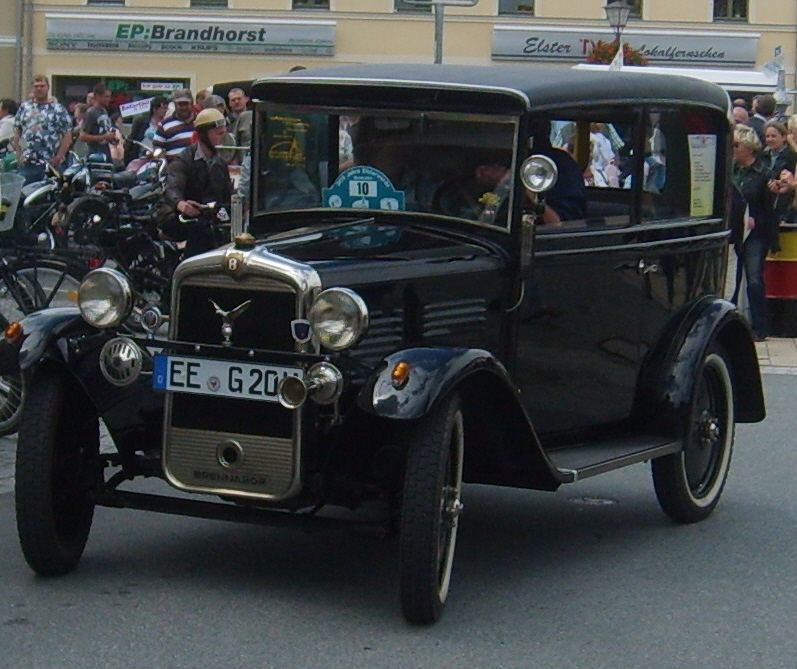Brennabor Typ C on:
[Wikipedia]
[Google]
[Amazon]

 The 1 Litre Brennabor Typ C is a small car introduced by
The 1 Litre Brennabor Typ C is a small car introduced by

 The 1 Litre Brennabor Typ C is a small car introduced by
The 1 Litre Brennabor Typ C is a small car introduced by Brennabor
Brennabor-Werke AG (previously Brennabor-Werke Gebr. Reichstein) was a German manufacturer of infant buggies, bicycles, motorcycles and, for two decades, of powered motor vehicles. It was based in Brandenburg an der Havel and operated between 1 ...
in 1931. In the wake of a sustained period of economic difficulties it represented a belated extension of the company’s range into the "small car" sector which hitherto Brennabor had ignored. In 1933 the car was upgraded and became the short-lived Brennabor Typ D
The Typ C was powered by a newly developed 4-cylinder 1 litre side-valve engine
A flathead engine, also known as a sidevalve engine''American Rodder'', 6/94, pp.45 & 93. or valve-in-block engine is an internal combustion engine with its poppet valves contained within the Cam-in-block, engine block, instead of in the cyli ...
of 3.4 litres, mounted ahead of the driver and delivering 20 hp at 2,800 rpm. Power was delivered to the rear wheels through a single plate dry clutch
A clutch is a mechanical device that engages and disengages power transmission, especially from a drive shaft to a driven shaft. In the simplest application, clutches connect and disconnect two rotating shafts (drive shafts or line shafts). ...
and a three-speed gear box controlled using a centrally positioned floor-mounted gear stick.
The car sat on a U-profile pressed steel chassis with rigid axles and semi-elliptical leaf springing. It was offered as a two-door sedan/saloon, a two-door cabriolet or a two-day roadster, in every case with a 2+2 seating configuration. The mechanically linked foot brake operated directly on all four wheels, while the handbrake operated on the rear wheels.
In the two years before the appearance of an upgraded model only about 1,000 Typ Cs were sold.
The concept was reworked and the car appeared as the Brennabor Typ D in 1933, now slightly longer than before and with a higher compression ratio
The compression ratio is the ratio between the volume of the cylinder and combustion chamber in an internal combustion engine at their maximum and minimum values.
A fundamental specification for such engines, it is measured two ways: the stati ...
which correlated with a 2 hp power increase. The Typ D shared its predecessor’s fate in the market place, however, and was not a commercial success. Approximately a further 1,000 of Brennabor’s 1 litre cars were sold as Typ Ds before the company’s decision, towards the end of 1933, to abandon automobile
A car or automobile is a motor vehicle with Wheel, wheels. Most definitions of ''cars'' say that they run primarily on roads, Car seat, seat one to eight people, have four wheels, and mainly transport private transport#Personal transport, pe ...
production.
Technical data
Sources
*Oswald, Werner: Deutsche Autos 1920–1945, Motorbuch Verlag Stuttgart, 10. Auflage (1996), {{ISBN, 3-87943-519-7 Brennabor vehicles